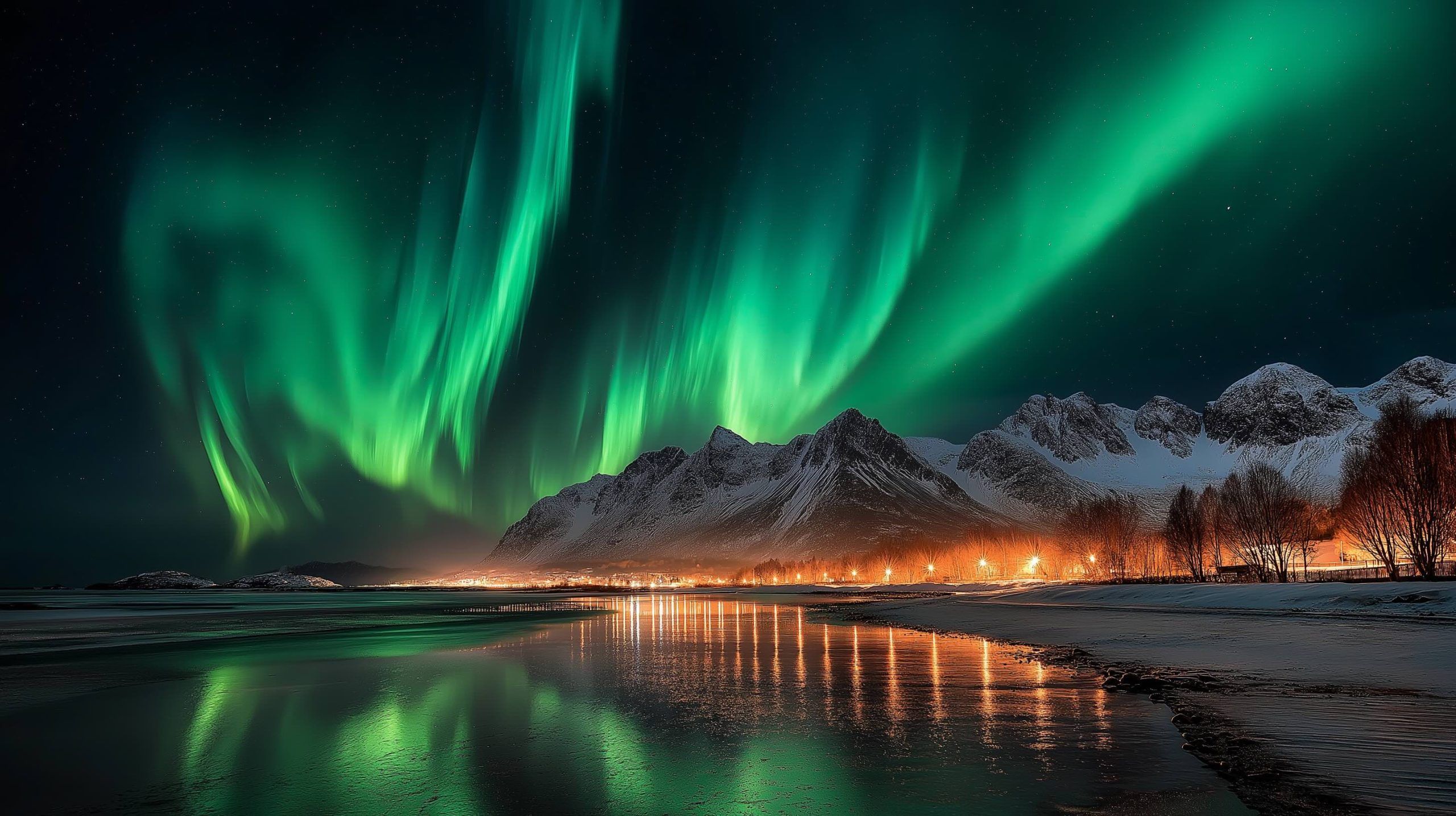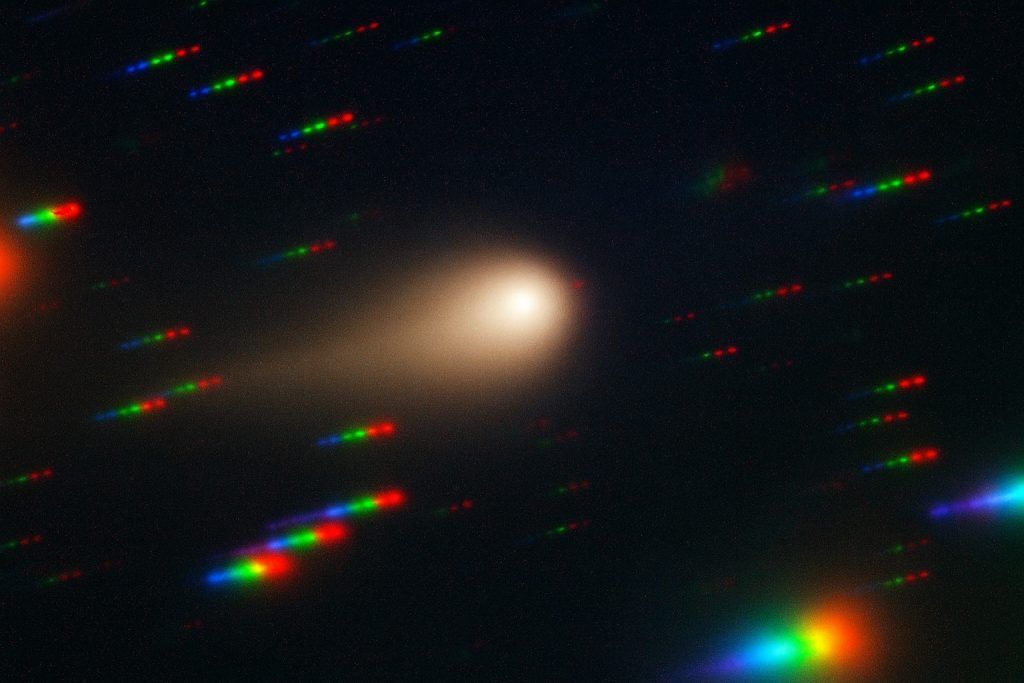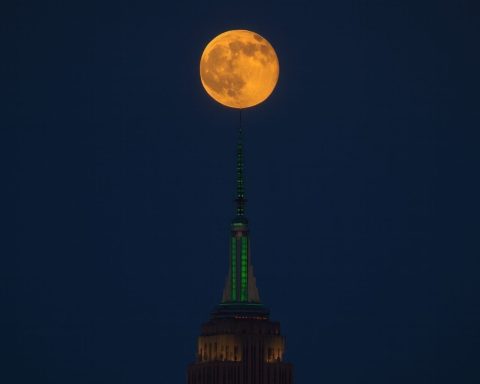Published: November 11, 2025
Key takeaways
- NOAA has upgraded its space‑weather outlook to a G4 (Severe) geomagnetic storm watch for Wednesday, Nov. 12, after today’s powerful X5.1 solar flare; G2 (Moderate) conditions are possible late tonight (Nov. 11) and G3–G4 are possible Wednesday into early Thursday, depending on CME arrival and magnetic orientation. [1]
- Tonight’s aurora could be visible across the northern U.S. and may reach into the Midwest, including Indiana, with the broader, stronger show favored late Wednesday into early Thursday. Local cloud cover will still make or break viewing. [2]
- A solar radiation storm (S1–S2) and R3 (Strong) radio blackout accompanied today’s flare; minor navigation and HF radio impacts are possible. [3]
What changed today (Nov. 11)
NOAA’s Space Weather Prediction Center (SWPC) posted a G4 (Severe) watch for Nov. 12, citing multiple coronal mass ejections (CMEs) now en route — including the most energetic, linked to today’s X5.1 flare that peaked at 10:04 UTC (5:04 a.m. EST). The agency says the latest CME appears partial‑halo and fast, and while forecast timing remains uncertain, confidence is high that Earth will catch at least a glancing blow. [4]
NOAA’s 3‑Day Forecast (issued 18:40 UTC) backs up the upgrade with a Kp breakdown that reaches G4 (Kp 8) in the 15–21 UTC window on Wednesday, with G3 (Kp 7) lingering into Wednesday evening and G2–G3 early Thursday. For tonight (Tuesday into early Wednesday), the forecast allows G2–G3 in the 03–06 UTC block — that’s roughly 10 p.m.–1 a.m. Eastern / 7–10 p.m. Pacific. [5]
Adding context: SWPC’s 12:30 UTC Forecast Discussion notes Region 4274 (complex beta‑gamma‑delta sunspot group) produced the X5.1 event and earlier X‑class flares, with modeling in progress and solar‑wind speeds likely exceeding ~700 km/s once the CMEs arrive. [6]
Where the aurora could appear tonight and tomorrow
- Tonight (Tue night, Nov. 11 → early Wed, Nov. 12): If the first CME’s magnetic field cooperates, auroras may dip into the northern tier and parts of the Midwest — including Indiana. SWPC’s viewline and independent overlays suggest visibility from Alaska through the Great Lakes and New England, with the best odds after 10 p.m. local where skies are clear and dark. [7]
- Wednesday (Nov. 12 → early Thu, Nov. 13): With the stronger CME(s) expected, the viewing footprint expands. In the Pacific Northwest, some forecasts caution clouds and rain may limit visibility west of the Cascades even if activity surges. [8]
Reminder: Cloud cover, light pollution, and the magnetic orientation (Bz) of the incoming CME ultimately control what you’ll see at your location. SWPC emphasizes that forecasters can only confirm storm strength when the CME is ~1 million miles out and measured by upstream monitors. [9]
Why NOAA jumped to a G4 watch
SWPC first outlined G2 (Nov. 11) → G3 (Nov. 12) → G1 (Nov. 13) watches on Monday. After today’s X5.1 flare — among the strongest of this solar cycle — and its associated CME, NOAA upgraded to include G4 (Severe) potential for Nov. 12 and G3 (Strong) for Nov. 13. [10]
The 3‑Day Forecast now explicitly shows G1–G4 possible on Wednesday and lists an R3 (Strong) radio blackout observed at 10:04 UTC today, consistent with the X‑class flare. A moderate solar radiation storm (S2) is ongoing/possible, which can affect polar‑route HF communications and aviation operations. [11]
What a G4 storm can do (beyond pretty skies)
Per NOAA’s Space Weather Scales, G4 (Severe) storms can trigger widespread voltage control problems on power systems, HF radio disruptions, and hours‑long degradation in satellite navigation. Aurora can descend to ~45° geomagnetic latitude — historically as far south as northern California and Alabama — when conditions align. [12]
Best times & tips for seeing the Northern Lights
- When to look:10 p.m.–2 a.m. local time is typically the sweet spot. Tonight’s NOAA outlook also favors 10 p.m.–1 a.m. Eastern (7–10 p.m. Pacific) for the first wave; Wednesday night could be the main event if the strongest CME hits as projected. [13]
- Where to look: Find dark, north‑facing horizons far from city lights. Give your eyes 20–30 minutes to adapt. [14]
- Photography: Modern phones can capture aurora using Night Mode; a tripod helps. Long‑exposure settings (ISO low‑to‑moderate, few‑second shutter, wide‑open aperture) reveal color your eyes may not. [15]
Local forecast note: Pacific Northwest
Even with strong geomagnetic activity, low clouds and rain may block views in western Oregon and Washington. If you’re in the PNW, consider east‑of‑Cascades or any breaks in cloud cover during the overnight windows. [16]
The bottom line
- Tonight (Nov. 11):G2–G3 possible late evening through after midnight; aurora chances extend from the northern tier down to Indiana where skies are clear. [17]
- Wednesday (Nov. 12):G3–G4 risk increases, with the strongest storming likely from afternoon UTC into the evening and overnight; viewing after dark could be widespread if storm intensity sustains. Expect updates as upstream solar‑wind readings confirm the CME’s magnetic orientation. [18]
Stay tuned to NOAA/SWPC for real‑time alerts, aurora viewline maps, and forecast updates as conditions evolve. [19]
Sources
- NOAA SWPC G4 (Severe) Watch in Effect for 12 November (published Nov. 11, 17:21 UTC). [20]
- NOAA SWPC 3‑Day Forecast (text) (issued Nov. 11, 18:40 UTC). [21]
- NOAA SWPC Homepage update — “Veteran’s Day fireworks! X5.1 flare (R3‑Strong) from Region 4274” (published Nov. 11). [22]
- NOAA Space Weather Scales (G1–G5 impacts). [23]
- KATU (Portland) — regional forecast note and visualization of NOAA’s G4 watch (published Nov. 11). [24]
- Space.com — states within tonight’s aurora viewline (updated Nov. 11; includes Indiana). [25]
- PEOPLE — practical viewing window and tips (published Nov. 10). [26]
Editor’s note: NOAA initially set lower storm levels earlier this week, then upgraded to G4 following today’s X5.1 flare and latest CME analysis; this article reflects today’s (Nov. 11) updates and will remain accurate as of publication time, but readers should consult SWPC for the latest alerts before heading out. [27]
References
1. www.spaceweather.gov, 2. www.space.com, 3. www.spaceweather.gov, 4. www.spaceweather.gov, 5. services.swpc.noaa.gov, 6. services.swpc.noaa.gov, 7. www.space.com, 8. katu.com, 9. www.spaceweather.gov, 10. www.spaceweather.gov, 11. services.swpc.noaa.gov, 12. www.swpc.noaa.gov, 13. people.com, 14. people.com, 15. people.com, 16. katu.com, 17. services.swpc.noaa.gov, 18. services.swpc.noaa.gov, 19. www.swpc.noaa.gov, 20. www.spaceweather.gov, 21. services.swpc.noaa.gov, 22. www.spaceweather.gov, 23. www.swpc.noaa.gov, 24. katu.com, 25. www.space.com, 26. people.com, 27. www.spaceweather.gov










